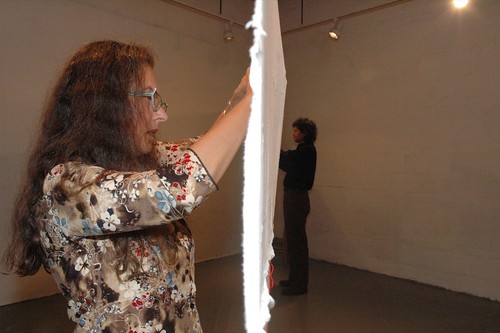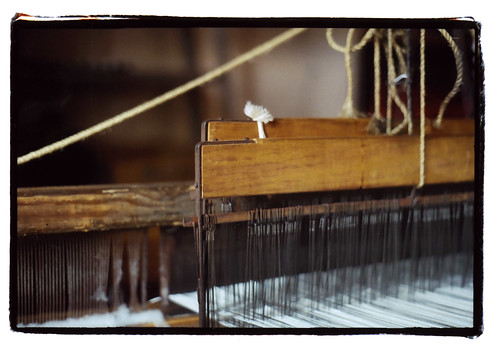[youtube=http://www.youtube.com/watch?v=3li_mT--f-A&hl=en]
[youtube=http://www.youtube.com/watch?v=3li_mT--f-A&hl=en]
I just submitted the work of Michele Feder-Nadoff, to the magazine I work for Zeek. Michele is a dear friend and a phenomenal artist, activist and educator. I thought it would be a good idea to share some information about Michele and to promote her organization the cuentos foundation. Artistic Director, Michele Feder-Nadoff, who is Jewish, founded Cuentos in 1998 with the humanist vision and commitment to tikkun haolam, a Jewish principal expressing each person’s responsibility to play a part in "healing the world." Cuentos members believe art is a transformative catalyst for effecting positive social change. Our work combats prejudice and discrimination through artistic and educational intergenerational projects and programs promoting mutual understanding.The abundance of cultural wealth living doorstep to doorstep in our neighborhoods provide all of us an opportunity to engage with and learn about each others' backgrounds. What connects us and how can live in peace together, connected by mutual understanding and appreciation of different cultures from around the globe?
Artistic Director, Michele Feder-Nadoff, who is Jewish, founded Cuentos in 1998 with the humanist vision and commitment to tikkun haolam, a Jewish principal expressing each person’s responsibility to play a part in "healing the world." Cuentos members believe art is a transformative catalyst for effecting positive social change. Our work combats prejudice and discrimination through artistic and educational intergenerational projects and programs promoting mutual understanding.The abundance of cultural wealth living doorstep to doorstep in our neighborhoods provide all of us an opportunity to engage with and learn about each others' backgrounds. What connects us and how can live in peace together, connected by mutual understanding and appreciation of different cultures from around the globe?
|
check out their new book: Ritmo de Fuego
Ritmo del Fuego / Rhythm of Fire is a unique achievement, telling the story of the deep-seated copperworking tradition of Santa Clara del Cobre, an ancient community in the forested mountains of Michoacán, Mexico. What is often seen as “folk art” is shown to stem from early workshops established in Michoacán during the 8th-9th centuries AD, by coastal traders and artisans from the Andean Region of South America. Since then, the manufactures have included utilitarian and ornamental objects. Many have been recovered at archaeological sites, most notably from the 15th century Tarascan Kingdom. Others embrace forms of Spanish origin after the 16th century conquest. Today in the expanding international market, Santa Clara copperwares include a wide range of sophisticated decorative vases, pitchers, trays, dinner wares and related forms. A vital community has evolved with this ongoing tradition, portrayed with affection and care by the project organizer Michele Feder-Nadoff, and the many other authors in this remarkable, well written contribution to the cultural history of the Americas.
click here to purchase
Below are selected excerpts from a grant proposal that I recently submitted to Washington University, for a cultural identity dialog exchange between Guatemalan Youth living within the diaspora and those living in Guatemala. Please contact me if you are interested in collaborating, participating (either yourself or your child) and funders.
Within most North American contexts I am inevitably the only Guatemalan representative. As a child I yearned for this paternal classification. I wanted desperately to be a Guatemalan. However, upon entering academia I immediately became the Guatemalan. As an artist, this categorization places me in the awkward position of being unable to produce work without feeling and seeming inauthentic, voyeuristic, and exploitative.In order to directly confront these insecurities and consequential perceptions, I will expose myself to the very environment where I feel most uncomfortable: Guatemala. I will present myself exactly as I do in the United States with the self-imposed title: Guatemalan Jewish Interdisciplinary Artist and Educator. Working as a researcher, artist, educator, student, performer and public speaker I will interact with all of the communities represented by the aforementioned title.
[...]In this lesson, students will critically analyze the ways in which Guatemalans have been depicted both historically and presently. They will look at national and international examples of these depictions, produced by: historians, anthropologists, sociologists, the media, and artists. Considering the mediums that have been utilized in these depictions (newspapers, magazines, history books, movies, paintings, the internet, etc.), and their availability to the general public, students will evaluate the impact of these depictions on the formation of their personal identity.Students will then discuss their feelings towards Guatemalan youth living in the US, who have inevitably been equally (in not more so) effected by these depictions. They will then analyze the specific elements these depictions falsely portray or leave unsaid, thus identifying the important things they want Guatemalan youth living in the US to know about their culture. [...]• What role does an individual play in defining their identity?• How is identity affected by: surrounding community, geographic location, socio-economic background, religious beliefs, political affiliation, gender, sexuality, level of education, access to technology?• What responsibilities accompany self-imposed cultural allegiance?• What responsibilities accompany societal-imposed cultural allegiance?
student work from Cuyotenango, Guatemala 